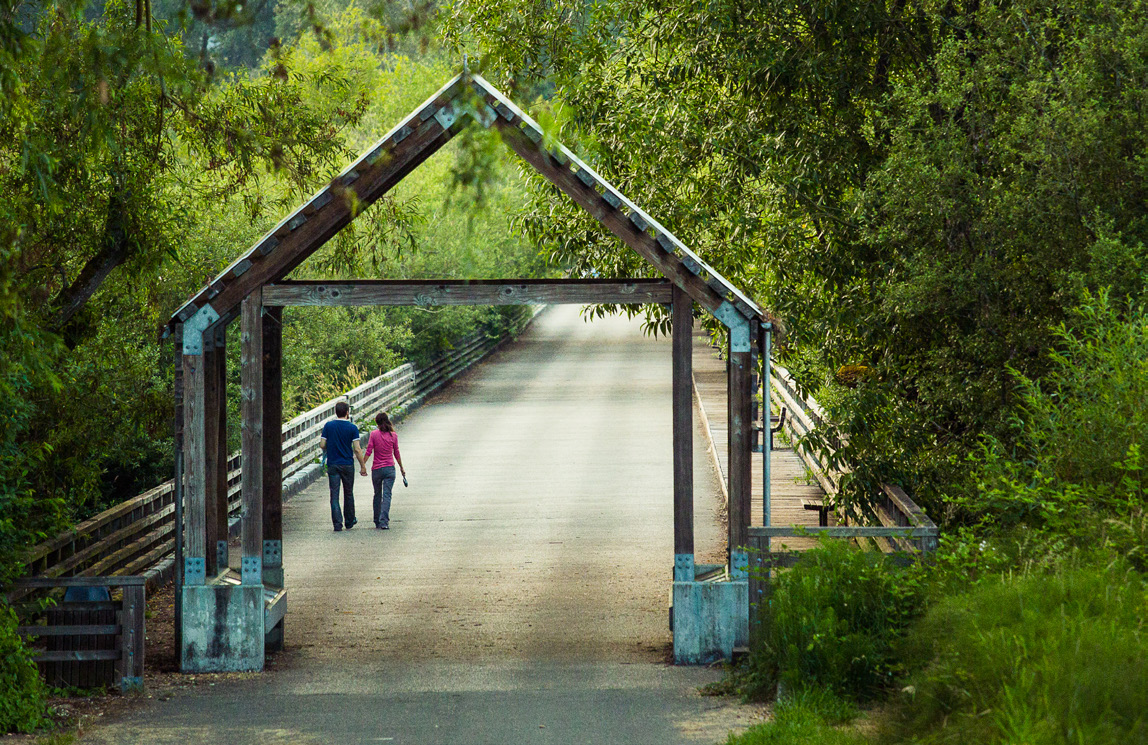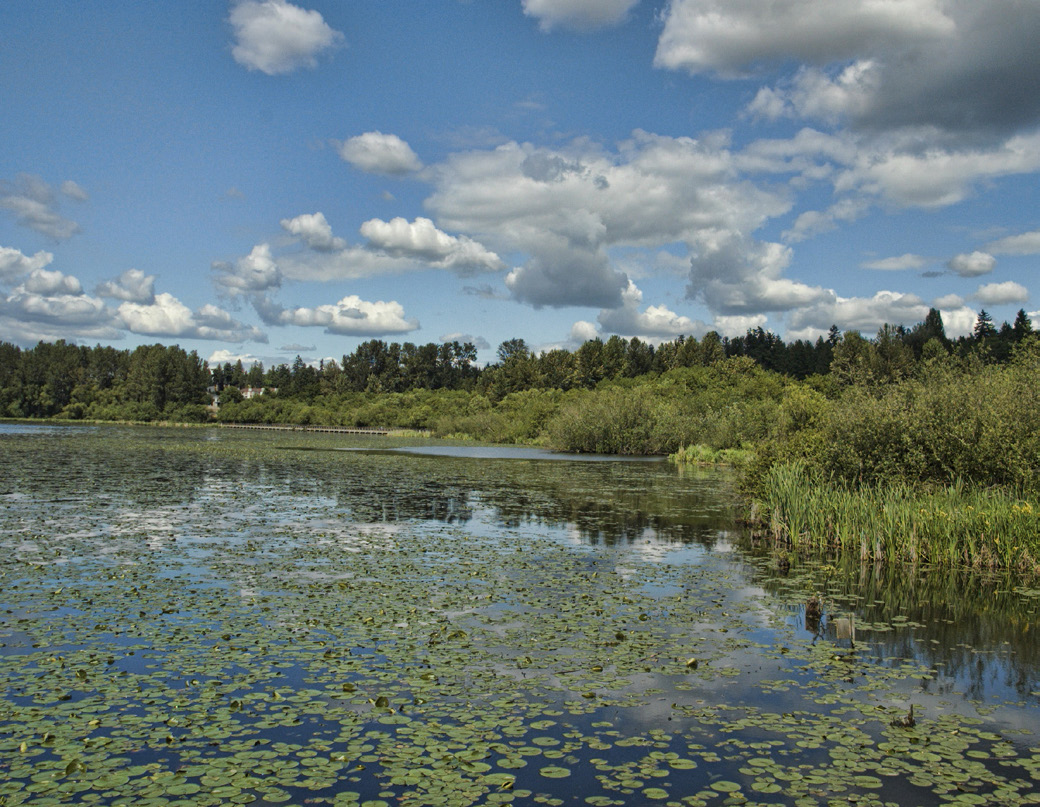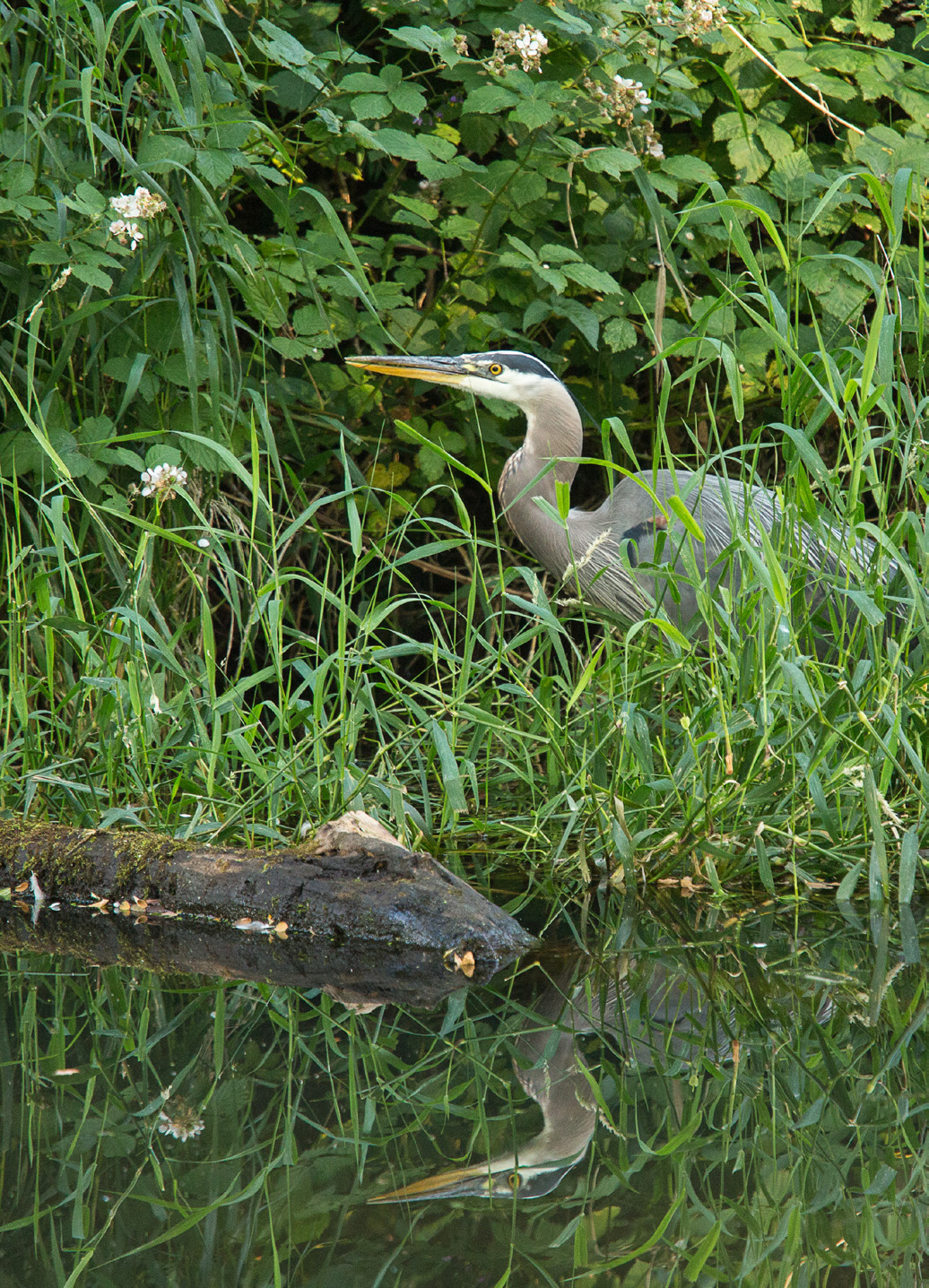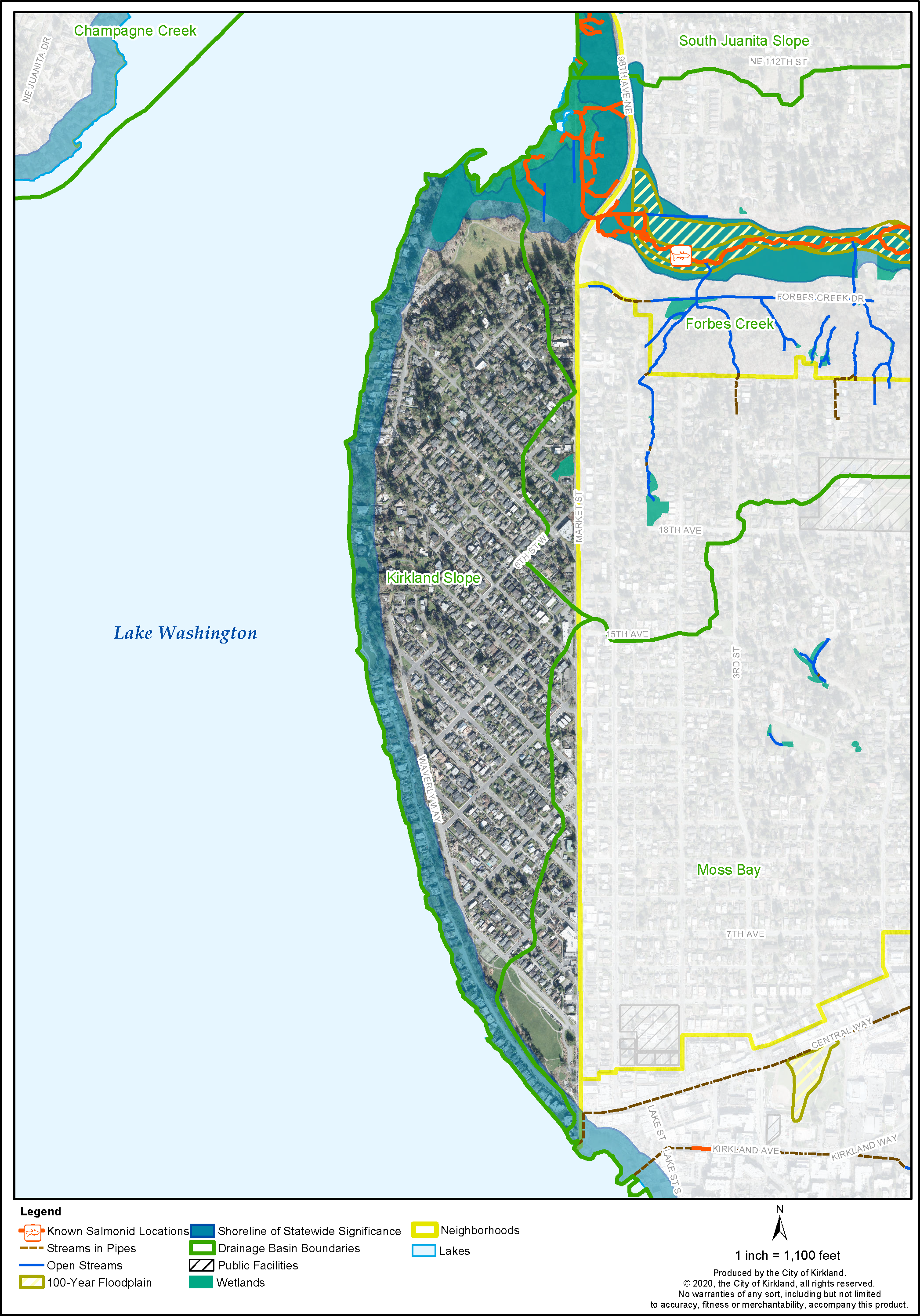4. NATURAL ENVIRONMENT
Policy M-4:
Protect and enhance the natural environment.
The environmental policies for the Market Neighborhood strive to protect and enhance the quality of the natural environment as a natural amenity, to avoid potential environmental hazards, and to utilize sustainable management practices. Maps further down in this section show the critical areas within the Market Neighborhood. Areas with steep slopes with potential for erosion hazards are located along the Lake Washington shoreline. These areas are prone to landslides, which may be triggered by grading operations, land clearing, irrigation, or the load characteristics of buildings on hillsides. Seismic hazard areas are also found along Lake Washington and in Juanita Bay Park. These areas have the susceptibility for soil liquefaction and differential ground settlement during a seismic event. 
Causeway at Juanita Bay Park
See the Environment Element of the Comprehensive Plan for more information about policies supporting protection of wetlands, streams and associated buffers, geologically hazardous areas, trees and wildlife. The Kirkland Zoning Code regulates tree retention, removal and development in critical areas including on geologically hazardous areas.
Policy M-5:
Protect and improve water quality and promote fish passage by undertaking measures to protect Lake Washington, wetlands, streams and wildlife corridors.
The Market Neighborhood is located within the Kirkland Slope, Forbes Creek, Moss Bay, and South Juanita Slope drainage basins (Figure M-1). Various Forbes Creek tributaries and wetlands constitute a valuable natural drainage system that flows into Lake Washington through Juanita Bay Park, a high-quality ecological area. This drainage system serves the drainage, water quality, wildlife and fish habitat, and open space needs of the northern portion of the neighborhood.
Biological resources in the neighborhood include one mapped wetland on the west side of Market Street, south of 7th Street West. In addition, there is extensive cutthroat trout habitat in the main stem of Forbes Creek downstream of Forbes Lake and known salmonid locations in Juanita Bay Park.
Figure M-1: Market Wetlands, Streams, and Lakes
Water quality is an important issue for all of Kirkland, but especially in the Market Neighborhood with its extensive shoreline, and groundwater that drains directly into Lake Washington. Protection of these valuable assets is the subject of various State, county, and local regulations, of which this Plan is a part. The Shoreline Area Chapter of this Comprehensive Plan discusses best management practices to protect the lake.
Policy M-6:
Ensure effective surface water management and pursue solutions for converting problematic excess runoff to a beneficial asset.
Surface water management is a particularly important issue in the Market Neighborhood given the drainage to the lake and areas of landslide susceptibility and liquefaction potential. The drainage basins and underground creeks move a significant volume of water through the neighborhood. Increased development has significantly decreased the amount of permeable surface and strained the existing water management ecosystem. The decreased number of large trees and accompanying decrease in deep root systems also impacts water flow and soil stability. City policies should ensure effective surface water management when adding more homes, replacing smaller homes with large homes, adding new paved surfaces, and allowing other activities that decrease permeable surface.
To protect and enhance the natural environment, encourage programs that put excess water runoff to good use. Programs can occur on a larger geographic scale, such as using water runoff to irrigate public spaces including parks and common areas, or occur on a property scale by, for instance, providing assistance for capturing rainwater off of roofs and using it to irrigate landscaping during the increasingly drier middle six months of the year.
Policy M-7:
Develop viewpoints and interpretive information around streams and wetlands if protection of the natural features can be reasonably ensured.
Juanita Bay Park provides educational opportunities to help the community learn about the locations, functions, and needs of critical areas and the wildlife that is dependent on these areas. This information helps to protect the park by raising awareness of the potentially negative impacts of nearby development and can increase public appreciation and stewardship. When appropriate, additional interpretive information and viewpoints should be added to Juanita Bay Park and other natural features in the neighborhood. 
Viewpoint at Juanita Bay Park
Figure M-2a: Market Landslide Susceptibility
Figure M-2b: Market Liquefaction Potential
Policy M-8:
Protect exceptional trees and groves of trees.
In the Market Neighborhood, protecting, enhancing, and retaining healthy trees and vegetation are key values that contribute to the quality of life. The City promotes retention of the Citywide tree canopy, significant trees, and groves of trees on private property through tree zoning regulations and planting of trees along streets in parks, and open space areas.
Policy M-9:
Protect wildlife throughout the neighborhood by encouraging creation of backyard sanctuaries for wildlife habitat.
The Market Neighborhood and Juanita Bay Park are home to many wildlife species, including bald eagles, beavers, herons, turtles, salmon and many other fish and birds. The neighborhood is fortunate to include the Juanita Bay Park urban wildlife habitat, which is a unique environment within the City. There are also two bald eagle’s nests in the south and northwest portion of the neighborhood. Protection of these special habitat areas is important so that they will be preserved for future generations.
People living in the neighborhood also have opportunities to attract wildlife and improve wildlife habitats on their private property. The City, the Washington Department of Fish and Wildlife, and other organizations and agencies experienced in wildlife habitat restoration can provide assistance and help organize volunteer projects.


Wildlife habitat at Juanita Bay Park





